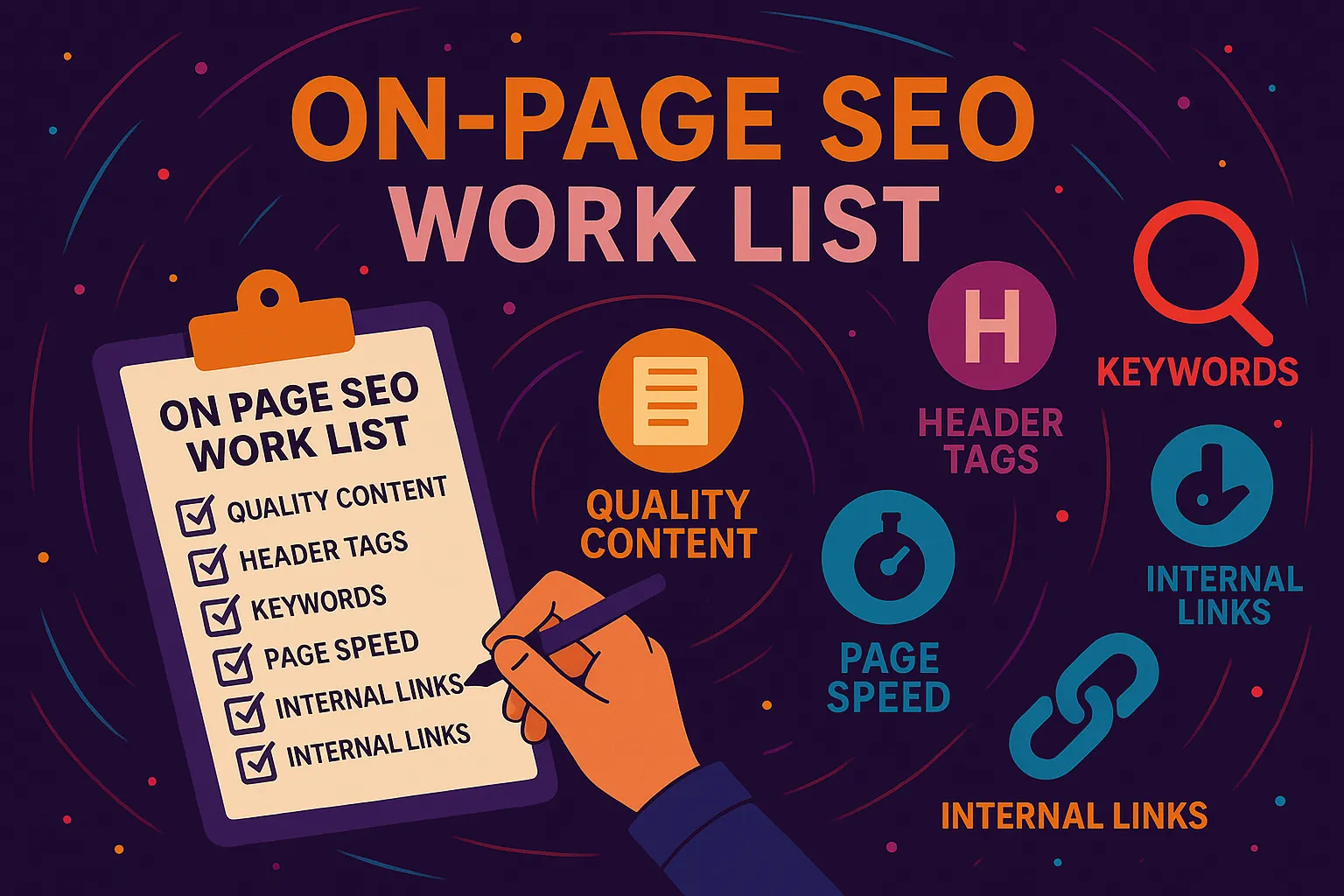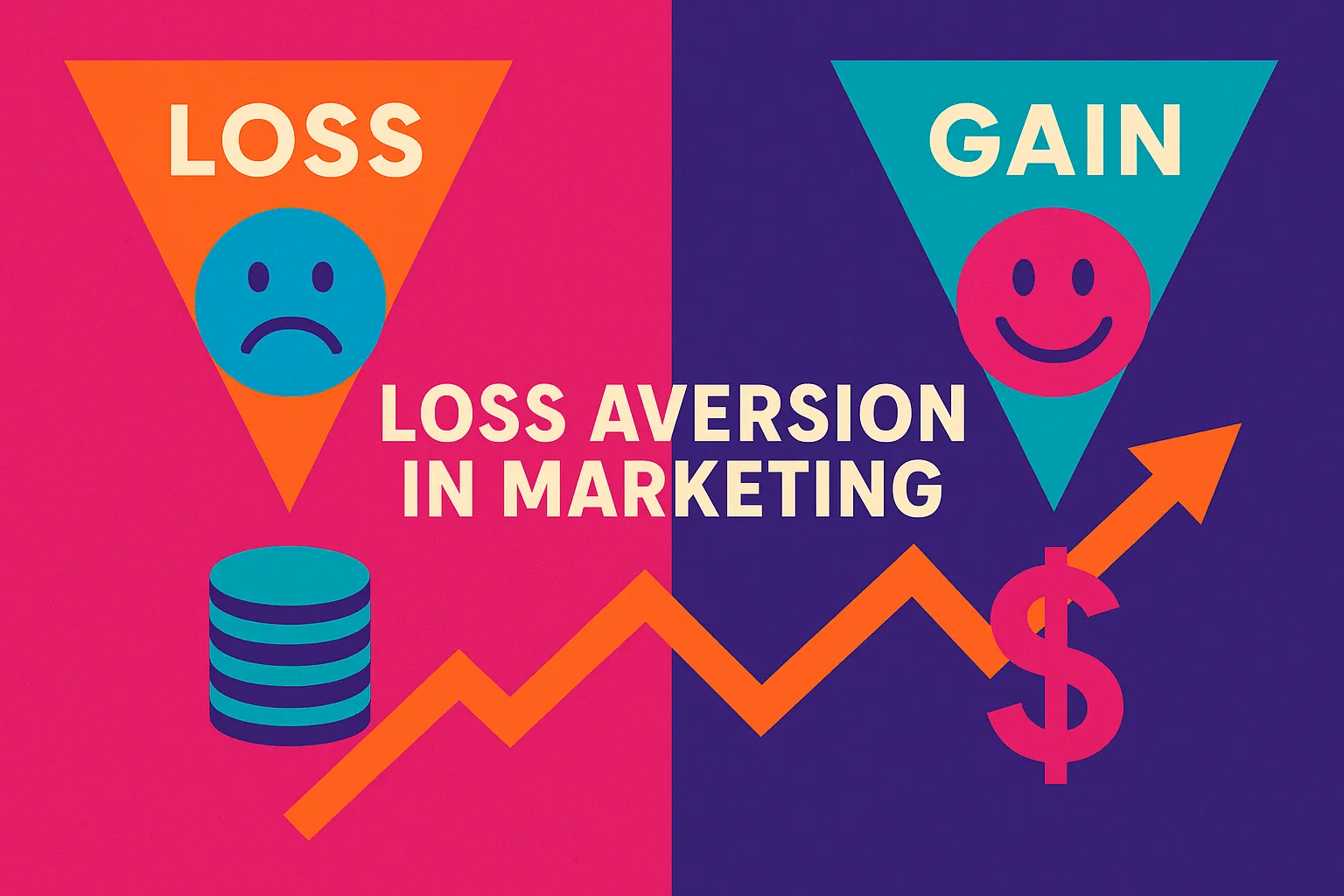What Are Technical SEO Activities?
Technical SEO activities are the behind-the-scenes efforts that help search engines find, crawl, and index your website more efficiently. They make sure your content is visible, accessible, and properly structured for both search engines and human users.
Unlike on-page SEO, which focuses on things like keywords and content optimization, or off-page SEO, which deals with backlinks and social signals, technical SEO deals with how your website is built and how it performs. At Vibe Branding, we’ve spent over a decade building high-performance websites, and we know firsthand that even the best content in the world won’t rank if technical SEO is ignored.
These activities are the groundwork — the invisible architecture that makes everything else possible. Think of it like building a house: you wouldn’t hang curtains before laying the foundation, and technical SEO is that foundation.
TL;DR – What You’ll Learn in This Guide on Technical SEO Activities
- What technical SEO activities are and how they differ from on-page and off-page SEO
- Why technical SEO is foundational for search visibility and user experience
- The top technical SEO activities to prioritize in 2025
- How to run a technical SEO audit using modern tools
- What mistakes to avoid and how to meet Google’s Core Web Vitals
- When to manage SEO in-house vs. outsourcing to experts like Vibe Branding
Why Technical SEO Matters More Than Ever in 2025
Let me be blunt. If Google can’t crawl your site, it won’t rank your pages.
It’s that simple. Over the past few years, search engines have become much smarter, and user expectations have skyrocketed.
They want speed, mobile access, and seamless experiences — and they want it yesterday. Technical SEO activities directly impact how your website loads, how it performs on mobile devices, and whether your URLs even show up in search results.
With Google’s Core Web Vitals now a confirmed ranking factor, speed and stability are non-negotiable. At Vibe Branding, we’ve seen businesses double their traffic just by fixing crawl errors and improving load times.
Imagine publishing a beautiful new blog post only to realize it never got indexed because your sitemap is broken or your robots.txt file is blocking it. That’s the kind of oversight we prevent with technical SEO.
It’s not glamorous work, but it makes all the difference.

The Core Technical SEO Activities You Can’t Ignore
When we onboard a new client, one of the first things we look at is their technical SEO foundation. We go straight into crawlability, indexation, and site architecture.
If search engines can’t navigate your site efficiently, then your content is lost in the void. One of the first technical SEO activities we recommend is fixing site structure.
Every page on your website should be just a few clicks from the homepage. We’ve helped ecommerce brands restructure their navigation and immediately saw more pages indexed and ranked. Internal linking isn’t just for users — it guides search bots, too.
Next is page speed. We compress images, minify code, remove render-blocking scripts, and often implement CDNs.
On one project, reducing the LCP from 4.5s to 2.2s increased conversions by 22%. Mobile-friendliness is another major checkpoint. If your site isn’t responsive, you’re toast in mobile search.
We use Google’s Mobile-Friendly Test and Semrush audits to catch these problems early. Security is also critical.
If you’re still running on HTTP, it’s time to migrate to HTTPS. Not only is it a trust signal, but Google ranks HTTPS pages higher.
We also check canonical tags, noindex directives, and robots.txt to make sure important pages are getting crawled, indexed, and ranked.
Structured Data, Schema, and XML Sitemaps: What to Know
Structured data is like speaking Google’s native language. It gives context to your content using schema markup.
For example, if you sell products online, structured data can help you display prices, ratings, and availability right on the search results page. These rich snippets don’t just look good; they improve click-through rates.
We use tools like Google’s Rich Results Test and schema generators to implement markup that aligns with each page’s content type — whether it’s a recipe, product, article, or FAQ. On one client’s site, adding schema markup for services increased impressions by over 40%.
XML sitemaps are another key part of technical SEO activities. They act like blueprints for search engines, showing what’s available and where to find it.
At Vibe, we always verify sitemap submissions in Google Search Console and cross-check them during audits. It’s shocking how many sites forget to update their sitemaps when adding or removing content.
If your site is large or dynamically generated, you might need multiple sitemaps and a sitemap index. The point is: make it easy for search engines to understand and navigate your content.
That’s the heart of technical SEO.
Running a Technical SEO Audit (Step-by-Step)
When we conduct a technical SEO audit for a client, we treat it like an annual health check-up. We start by crawling the entire site with Semrush or Screaming Frog to detect broken links, redirect loops, orphan pages, and crawl budget waste.
Once we get the crawl data, we look for issues that are preventing Googlebot from efficiently indexing the site. One issue we often find is duplicate content.
Sometimes it’s caused by CMS quirks or URL parameters. We use canonical tags and URL rules in Search Console to tell Google which version to prioritize.
Another common red flag is thin content: pages with low word count or no real value. We either merge, expand, or remove them.
Core Web Vitals are another major focus during audits. Using PageSpeed Insights, we test both mobile and desktop performance and break down scores for LCP (Largest Contentful Paint), INP (Interaction to Next Paint), and CLS (Cumulative Layout Shift).
If a page scores poorly, we isolate which scripts or elements are dragging it down and fix them. We also review mobile usability, especially in GSC.
Often, buttons are too close together or font sizes are too small. We make sure every page passes the mobile-friendly test and uses proper viewport tags.
And finally, we check the robots.txt file, ensuring it’s not blocking critical assets like JS, CSS, or images. An audit isn’t just about finding problems — it’s about creating a prioritized roadmap.
We segment issues by severity and impact, then tackle them in phases so our clients can see steady improvements.
Tools We Use to Optimize Technical SEO (And You Should Too)
Let me pull back the curtain on our toolkit. We use a combination of free and paid tools to cover every corner of technical SEO.
Google Search Console is where we start. It tells us which pages are indexed, where there are crawl errors, and how a site performs for Core Web Vitals.
Semrush’s Site Audit tool is our go-to for a 360° look. It checks over 140 technical SEO issues, from hreflang conflicts to duplicate metadata. Screaming Frog SEO Spider is a desktop-based crawler we use for custom audits or when clients need offline analysis.
For speed, nothing beats Google PageSpeed Insights combined with Lighthouse. These tools help us understand what’s hurting performance and how to fix it.
We also use GTmetrix for clients who want visual performance waterfalls. Structured data?
We like Merkle’s Schema Markup Generator and Google’s Rich Results Test. And if you’re using WordPress, plugins like Yoast SEO or RankMath make handling metadata and schema far less intimidating.
We round this off with Ahrefs or Semrush to monitor crawlability, backlinks, and competitive benchmarks. Each of these tools adds value, but the key is knowing how to interpret the data and act on it.
Tools are just that — tools. It’s the strategy that turns insight into impact.
The Tools That Help You Audit and Fix Technical SEO Issues
Over the past decade at Vibe Branding, we’ve used a wide variety of SEO tools — and honestly, many of them promise the world but deliver less. However, when it comes to managing technical SEO activities, a handful of tools consistently prove to be essential for both routine maintenance and in-depth audits.
First, Google Search Console is our go-to. It’s free, it’s powerful, and it gives you direct insights into how Google views your site.
From crawl errors to mobile usability and Core Web Vitals, it’s often the first place we check when diagnosing a drop in rankings or traffic. When we spot trouble areas, we dig deeper with tools like Semrush’s Site Audit, which has saved us hundreds of hours by scanning for broken pages, duplicate content, thin content, and even crawlability issues.
Next, we look at Screaming Frog SEO Spider. This desktop tool is incredible for deep dives into site architecture.
It crawls all your URLs like Googlebot would, and helps us visualize technical bottlenecks. One thing I love is its ability to find missing or incorrect canonical tags, which are often invisible but hugely impactful.
For site speed, Google PageSpeed Insights and Lighthouse provide real-time, browser-based feedback. They break down speed issues by cause — whether it’s oversized images, excessive JavaScript, or render-blocking CSS.
And when we need to demonstrate improvements to a client, the Core Web Vitals reports in these tools offer measurable benchmarks. We also use Ahrefs for backlink tracking and technical audits at scale, especially for our clients in ecommerce or B2B.
And Cloudflare and GTmetrix are invaluable when testing CDN performance or uncovering complex page load issues. In 2025, with search engines becoming more sophisticated, using the right tools to keep up with technical SEO activities isn’t optional — it’s foundational.
If you’re a small business, start with free tools like GSC and PageSpeed Insights. If you’re managing a larger site, invest in Semrush or Screaming Frog — the ROI is real.
Why Structured Data, Schema Markup, and Sitemaps Are SEO Power Plays
If you’ve ever seen a Google result that includes stars, pricing, or FAQs right in the snippet, you’ve already witnessed the power of structured data and schema markup. These behind-the-scenes elements are silent drivers of visibility, click-through rate, and context for search engines — all core outcomes of well-executed technical SEO activities.
At Vibe Branding, we treat schema markup like a translator between your website and Google’s bots. It helps explain what a page is about in a way that algorithms understand better. For example, if we’re optimizing a product page, we use the “Product” schema.
For blog posts, we’ll add “Article” or “HowTo” schema. This small layer of code can dramatically increase the chances of Google featuring your content as a rich result.
We’ve seen firsthand how implementing schema boosted one client’s click-through rate by 18% over three months — without even changing the content. Google simply presented the content better in search results thanks to the markup.
XML sitemaps, on the other hand, act as a roadmap. They list all your site’s most important pages and help search engines find and index them efficiently.
We generate sitemaps using Yoast on WordPress and always submit them through Google Search Console. It’s a best practice we’ve followed for years — especially critical for larger sites with deep architecture.
In 2025, this technical SEO activity is even more important as AI-driven engines expect cleaner, well-labeled data. Schema and sitemaps help ensure your content isn’t just found — it’s understood.

Mistakes in Technical SEO That Can Tank Your Rankings
As much as technical SEO can help you, it can just as easily hurt you if mishandled. One mistake we commonly see during site audits is blocking key pages via robots.txt or meta tags.
A simple disallow line or a hidden noindex tag can quietly remove high-value content from Google’s index — and sometimes, businesses don’t even realize it until traffic flatlines. Another common issue is duplicate content — often caused by URL variations like www vs. non-www, HTTP vs. HTTPS, or parameters that aren’t properly handled.
Without a canonical tag pointing to the preferred URL, Google may either split your link equity across pages or just pick the wrong one entirely. We had one client lose ranking for their own branded keyword because Google indexed a test version of their homepage instead of the live one.
Page speed is another killer. If your site is too slow to load — especially on mobile — users bounce, and Google takes note.
We once onboarded a client with a gorgeous, media-rich homepage that took 11 seconds to load. Within a week of compressing images, lazy-loading assets, and cleaning up scripts, their bounce rate dropped 23%.
Then there are redirect chains and loops, which confuse crawlers and frustrate users. These occur when URLs redirect to other redirects or — worse — get stuck in a loop.
It’s a hidden issue we catch often with Screaming Frog or Semrush audits. The key here is awareness.
You don’t need to be perfect, but you do need to be proactive. Technical SEO activities are not one-and-done — they’re a continual process.
How Often Should You Review Your Technical SEO Activities?
At Vibe Branding, we run a monthly SEO maintenance checklist that includes all critical technical elements. For enterprise clients, it’s weekly.
But for most businesses, quarterly audits are a great rhythm to catch issues before they snowball. Think of it like a routine physical for your website.
You don’t wait until you’re sick to see a doctor — and you shouldn’t wait until rankings crash to check your site’s health. We scan for crawl issues, speed drops, broken links, schema errors, and XML sitemap updates.
Whenever we launch a new website or redesign a client’s site, we run a full technical SEO audit as a pre-launch checklist. This helps us catch indexation problems, mobile bugs, and speed issues that could cripple the rollout.
Also, anytime there’s a Google algorithm update, you should absolutely check your technical SEO metrics. Sometimes, what was fine last year is no longer up to par today.
Pro tip? Set up automated alerts in Google Search Console and Semrush.
If your crawl errors spike or pages get deindexed, you’ll know fast.
Core Web Vitals: Meeting Google’s Experience Standards
Back when Google first introduced Core Web Vitals, we knew it was a sign of where search was heading. In 2025, they’re no longer a “nice to have” — they’re a baseline requirement.
These metrics measure real-world user experience and are core to modern technical SEO activities. There are three main Core Web Vitals to optimize for:
- Largest Contentful Paint (LCP) – how long it takes for the main content of a page to load
- First Input Delay (FID) – how fast the page reacts when users try to interact
- Cumulative Layout Shift (CLS) – how stable the layout is as it loads
At Vibe, we aim for the following benchmarks on every site:
Metric | Target Score |
LCP | < 2.5s |
FID | < 100ms |
CLS | < 0.1 |
If a site misses these marks, we get to work on optimizing image sizes, reducing unused JavaScript, using font-display: swap, and enabling proper caching. One of our ecommerce clients saw their organic traffic grow by 21% after passing all three metrics — just because users had a better experience.
The best part? Tools like PageSpeed Insights, Lighthouse, and Semrush Core Web Vitals Report make this easier to monitor than ever.

Can Small Businesses Handle Technical SEO In-House?
This is one of the most common questions we get at Vibe Branding: “Can I just handle technical SEO myself?” The answer? It depends.
If you’re a small business with a relatively simple website, yes — with the right guidance and tools, you can handle many technical SEO activities in-house. Platforms like Shopify and Squarespace offer built-in technical SEO features.
WordPress, with the right plugins like Yoast and Rank Math, gives you the tools to manage sitemaps, schema, and on-page elements with relative ease. That said, there’s a limit.
The moment you start running into Core Web Vitals issues, indexation anomalies, or advanced schema needs — that’s where it makes sense to bring in an expert. Technical SEO is deep, and mistakes can go unnoticed for months while silently hurting your traffic.
For mid-size to enterprise brands, technical SEO is usually best handled by an experienced SEO partner or agency. That’s where we come in.
With over 10 years in the field and a team that speaks both developer and marketer fluently, we bridge that gap and ensure your site runs like a machine
The Long-Term Value of Prioritizing Technical SEO Activities
As I look back over the last decade of leading Vibe Branding, one pattern has held true: businesses that prioritize technical SEO activities from the start not only perform better — they grow faster. Why?
Because they build a foundation that supports everything else in digital marketing, from content creation to paid ads and beyond. When your website is technically sound, search engines can crawl it, index it, and rank it appropriately.
Your users enjoy faster load times, fewer broken experiences, and smoother navigation. And you — the business owner, the marketer, the founder — gain peace of mind knowing your digital house is in order.
I’ve seen firsthand how businesses struggle when they ignore technical SEO. One of our clients came to us after spending $50,000 on content and backlinks — yet saw no real growth in traffic.
After running a full technical audit, we discovered their sitemap wasn’t submitted, 40% of their pages were orphaned, and their mobile performance score was below 30. No wonder they weren’t ranking.
Within six weeks of fixing those issues, they started seeing meaningful results. This is what makes technical SEO different from other areas of SEO.
It’s not about chasing trends or creating viral content. It’s about the quiet, powerful work of building infrastructure — the part of your website that no one sees but everyone relies on.
As we move deeper into 2025, Google’s algorithms will continue evolving. Core Web Vitals, structured data, and AI-powered crawling will play an even bigger role.
That’s why now, more than ever, your site needs to be technically excellent. If you’re not auditing, fixing, and improving these behind-the-scenes systems regularly, you’re handing opportunities to your competitors.
At Vibe Branding, we don’t treat technical SEO as a checkbox. We treat it like mission control. It’s what powers your visibility, protects your investment, and future-proofs your business.
So whether you’re doing it in-house or working with a partner, take this seriously. Audit your site. Fix your foundation.
And keep refining your systems. Because great marketing doesn’t start with ads, social posts, or even content.
It starts with the code.





